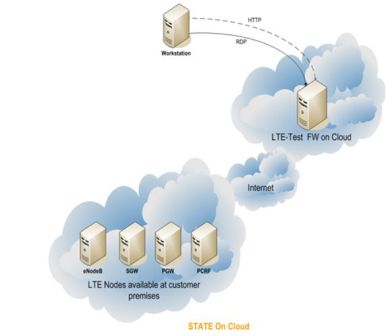No matter where one sits in the telecommunications industry from a technology or domain perspective — spanning infrastructure hardware manufacturers, service providers (wired and wireless), software vendors, platform engineers, network management solutions specialists, device manufacturers, etc. — test environment creation is an important criteria for maximum test coverage. It can also directly impact both CapEx and OpEx in your organization.
The challenge is that the pace of innovation and the need to be first to market and fast in the market means testing has become both a constant and increasingly expensive in a world of fickle markets and continuous global changes in standards and regulatory compliance. The question is whether there is a cost-effective alternative to traditional ways of doing functional testing, never mind end-to-end and interoperability testing. The answer is yes! In fact, as with so many things the solution is in the cloud.
A recent TMCnet webinar that featured subject matter experts from Aricent (News - Alert) Group, “Cloud-based Telecom Testing: Why and How,” looked at the challenges of traditional testing and at how Aricent’s cloud-based LTE (News - Alert) test tool the ASorware Tool for Automated Test Environment (STATE) accelerates unit testing, subsystem and system integration testing, and regression testing of telecom products and applications.
The challenges of today’s testing environments
As Aricent’s Srimanta Kumar Purohit, principal systems engineer and Sivakumar M, technical leader, highlighted, the challenges facing testers in the telecom industry today are daunting. They include:
- Soaring CapEx: Technology evolution leads to continuous investment in hardware and test tools, reusability of the existing tools decreases rapidly, creation of proprietary tools is time consuming, OEMs are often left with few options to choose from.
- Infrastructure Demands: Huge, dedicated infrastructures are needed, despite fast-changing requirements infrastructure setup times are slow, and there are huge infrastructure management costs which is an overhead on the OpEx.
- Procurement Delays: Cross-functional team approvals lead to delays, there are long lead times in receiving the tools/hardware, constant communications are required with the vendor, and reshipping of faulty tools/hardware is a big issue.
- Underutilized Test Environments: Test beds remain idle for about 40% of the SDLC cycle, distributed and cross-functional teams restrict the sharing of test beds, and mandates exist to invest in tools that might provide insufficient test coverage.
- Scalability Challenges: More engineering effort wasted creating larger downtime during scalability operations.
- Time to Market Delays: Procurement delays and scalability problems affect time to market, there is a lack of true round-the-clock lab accessibility which also delays time to market, and unfortunately most companies have low agility in handling business requirements with their supporting staff.
Why cloud-based testing makes economic and other sense
Cloud-based testing makes economic sense for all of the reasons associated with moving most business processes to the cloud — no asset creation, pay-for-use, scalability, improvement of hardware utilization by allowing remote access, connectivity, acceleration of time-to-market by reducing test life cycles, and ease of management. Aricent says these high-level benefits alone can produce upwards of 35 percent cost reductions.
Where it becomes even more interesting is in seeing how their STATE environment, based on LTE connectivity, works. The diagram below demonstrates the basics.

Source (News - Alert): Aricent
The system under test (SUT) is located at the customer’s premises and the STATE test tool is hosted in the cloud and therefore accessible by all members of the test team. Testing phases that can be run include: functional/system testing, regression testing, system integration testing, protocol conformance testing and application testing. In short, virtually every test required to get a product into the market quickly in a manner that reduces both time and cost.
Aricent is careful to note that the move to the cloud requires extensive analysis of your current testing capabilities, consideration of the kinds and duration of tests that will be run in the future (including physical assets and personnel required to get the job done), business objectives that need to be achieved and in what time frames, and a full understanding of all the pain points and potential risks (like security) that must be addressed along the way.
The webinar is full of practical advice, but the proof is in the actual implementation. Aricent walked participants through a case study on the porting of a test framework to the cloud that was comprised of a complicated scenario involving Linux/Windows, Aricent’s STATE, GTP, Diameter, UDP (News - Alert), TCP, Java Runtime Environment, and TCL. It compares the STATE solution to a traditional one looking at initial costs, maintenance costs, test bed set up times and execution times. The results are compelling.
While cloud-based testing of telecom equipment may be a concept that you have little knowledge of, if your company has numerous products in the pipe, disparate individuals from your own or OEM organizations involved in testing (especially in geographically diverse locations) and you are frustrated with the time and expense associated with even your current best practices, cloud-based testing is certainly something you need to consider.
Edited by Jennifer Russell